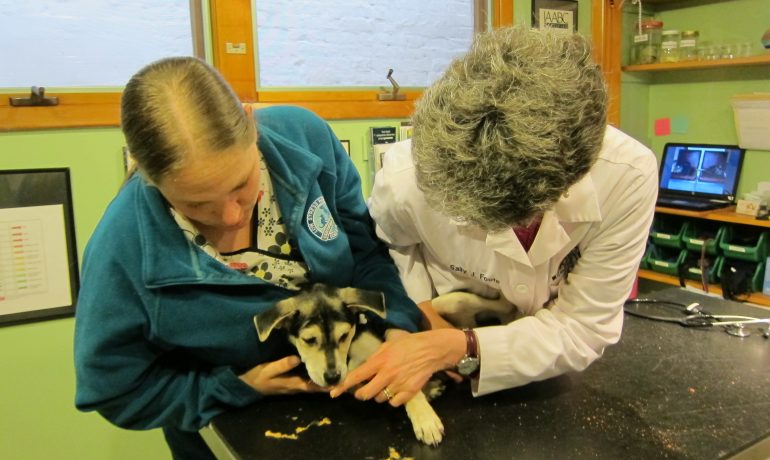How an email thread helped patient assessment and avoid staff injury Recently, I reached out to a specialist DVM involved in managing chronic orthopedic pain in a middle-aged aggressive dog. During my behavior consult, it was clear there was a decline in pain management between chiropractic visits and intermittent facial muscle twitching. I sent a copy of my updated behavior report and asked the other specialist for their assessment of pain management decline and how the dog behaved during the therapy visits. I was concerned about aggression relapse at a veterinary clinic as both pain and neurological changes can aggravate aggression The specialist informed me that the dog recently reacted to an assistant present but did not interact with the dog during a session. This was not typical. At a chiropractic session, a slow-growing mass was observed in the eye and a referral to ophthalmology was made by the primary DVM. The email chain that clarified info to all Now this dog has 4 DVMs involved in care. The pain management specialist reached out and started an email thread between the ophthalmology department – pain management department – myself – and the primary DVM to give her assessment of this dog’s behavior during exams at this specialty center, her concerns for safe handling considering the safety risk of an ophthalmologic exam. She asked for my input about the scope of his behavior, the recent uptick in his aggression, and assessment for safe handling while needing an eye examination. This one email, prompted a sharing of observations, and videos from the client to show the neurological signs, options for telemedicine as an initial screening tool for an ophthalmologic exam, and the feasibility of providing an MRI study at this facility safely. In two days, through sharing updates from the client, additional videos, and the primary DVM for the changes in this dog’s ability to tolerate handling with pre-, meds a realistic plan was made for him. Tell each other the whole story In an initial email between the pain specialist and myself, the specialist commented that the dog had been aggressive recently. No other details – I asked for the whole story. The specialist readily described the incident. This gave more detail that helped me in my assessment and also led to considering how this dog would or would not be safe for an ophthalmic exam, and the chain email to be sure all were informed. Pre-exam medications were used on this dog before general exams at the primary practice. That detail was also missing from some of the history notes. The primary DVM clarified this in the email thread – also very important information to consider. Specific descriptions of how an animal acts in an exam are often missing in our histories. There may be shorthand such as “CARE” or FAS = 5. But not knowing exactly what this means, can create risky care situations. Also, it decreases our awareness of changes in this patient – for anxiety, pain, or neurological function. That leads to incomplete plans for handling and care, resulting in staff injury risk, patient struggles and stress, and client frustration due to rescheduling or limiting care. I appreciate the pain specialists’ lead in creating that 4 DVM email thread. She took the initiative to get everyone on the same page when she recommended the referral to Optho and knew that that department needed to know all to be safe and complete. Keep exam behavior info direct, accurate and simple It does not need to be complex or difficult to describe patient exam behavior -use the words from the Canine Ladder of Aggression and Feline Ladder of Aggression for a clear understanding of exactly what this patient does for touch, approach, and clinic environment in your notes or alerts. This is not a judgment on the animal – it is an objective observation. Treat exam behavior in the same way you would drug reaction alerts. The amount of time, money, and improved safety with foreknowledge is priceless. Easy ways to learn more about Low-Stress Care The best courses in my shop to help you and your staff use this approach are the Top 5 Low-Stress Handling Techniques of Dogs and Top 5 Low-Stress Handling Techniques for Cats Each webinar includes body language charts, and handouts and is repeatable. Discounts for groups of 4 or more. email me for group purchases |
 |



